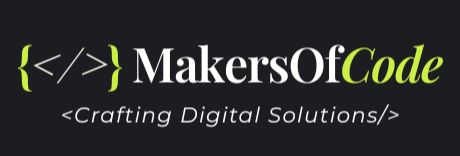The Rise of Low-Code and No-Code Development
How visual development platforms are reshaping the way software is built—and who builds it.
Introduction
In a world where digital transformation is no longer optional, businesses are under constant pressure to build apps faster and smarter. Enter low-code and no-code development platforms—tools that empower users to create applications with little to no traditional programming knowledge.
This movement is revolutionizing software development by democratizing access, speeding up delivery, and allowing teams to focus on solving business problems rather than writing boilerplate code. But it also raises important questions about scalability, security, and the future role of developers.
What is Low-Code/No-Code?
- Low-Code Development: Requires minimal hand-coding. Users build apps through visual interfaces, but can inject code where needed for customization.
- No-Code Development: Fully visual. Users design workflows, interfaces, and data structures using drag-and-drop tools, without writing code.
Why It’s Gaining Popularity
The rise of these platforms is being driven by several key factors:
- Developer Shortage: Demand for apps far outpaces the supply of skilled developers.
- Faster Time to Market: Businesses can launch MVPs or internal tools in days instead of months.
- Cost Reduction: Less need for large dev teams reduces overhead.
- Empowered Business Users: “Citizen developers” (non-tech professionals) can build solutions tailored to their needs.
Popular Low-Code and No-Code Platforms
- Bubble – A no-code platform for full-stack web applications.
- OutSystems – A powerful low-code platform for enterprise-grade apps.
- Webflow – No-code design-first website and CMS builder.
- AppGyver – No-code mobile/web app builder with logic flow control.
- Microsoft Power Apps – Enterprise-level no-code/low-code app creation.
Use Cases
Low-code and no-code platforms are ideal for:
- Prototyping and MVPs
- Internal business tools (CRM, dashboards, forms)
- Workflow automation
- Customer-facing portals and apps
- Rapid iterations and A/B testing
Advantages
- Speed: Visual development and prebuilt components accelerate app delivery.
- Accessibility: Non-developers can contribute to app creation.
- Agility: Easy to make quick changes and adapt to new requirements.
- Lower Maintenance: Platforms handle much of the backend infrastructure and deployment.
Challenges and Limitations
- Scalability: May not be suitable for high-traffic or complex logic-heavy apps.
- Customization Limits: Full control is sometimes restricted or requires coding workarounds.
- Security: Abstracted platforms can pose risks if not vetted properly.
- Vendor Lock-in: Migrating away from a platform can be difficult or costly.
The Future of Development?
Low-code and no-code platforms are not here to replace traditional developers—but to enhance and expand what’s possible. Developers can use them to quickly prototype ideas, automate repetitive tasks, or work alongside business users to co-create solutions.
In the coming years, we’re likely to see more hybrid teams, where developers, designers, and non-tech users collaborate using visual platforms and custom code together. As AI continues to integrate with these tools, expect even more intelligent automation, code generation, and real-time optimization.
Conclusion
The rise of low-code and no-code development represents a fundamental shift in how software is conceived, built, and maintained. It’s breaking down the barriers between idea and execution—and enabling more people than ever to bring digital products to life.
Whether you’re a founder with no coding experience or a senior developer looking to speed up delivery, low-code and no-code platforms are powerful tools worth exploring.
💡 Final Thought:
In the new era of software, coding is a skill—but building is a mindset.







